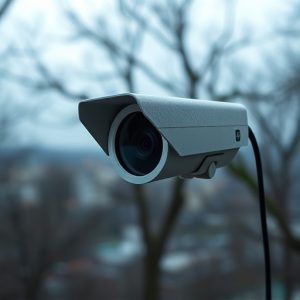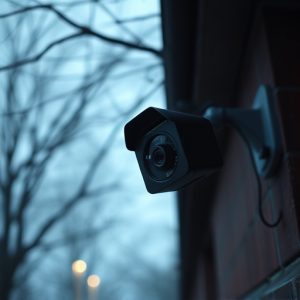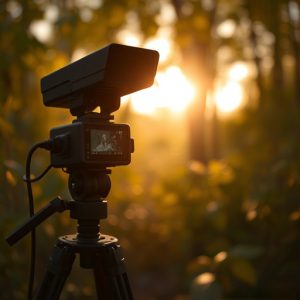Wireless Hidden Camera Detection: A Comprehensive Guide for Apartment Safety
Wireless hidden cameras, disguised as everyday items, offer apartment dwellers discreet surveillance…….
Wireless hidden cameras, disguised as everyday items, offer apartment dwellers discreet surveillance and real-time video feeds via connected devices, enhancing home security. To identify these cameras, meticulously inspect common areas and less obvious spots like cabinets, behind pictures, or within walls. Regular maintenance and understanding local privacy laws are crucial for safe and legal use. Advanced tools like EMF detectors, thermal imaging cameras, and night vision goggles aid in detection. Proactive measures include regular inspections, advanced technology, and resident vigilance to prevent and deter covert recordings in apartments.
Uncover the insidious world of wireless hidden cameras with our comprehensive guide. This article equips you with crucial knowledge on identifying potential covert recording spots in apartments, understanding advanced detection methods, and navigating legal considerations. Learn how to protect your privacy and ensure a safe living environment. Discover practical tips for both residents and managers to prevent and detect covert recordings, especially focusing on wireless hidden cameras designed for apartments.
- Understanding Wireless Hidden Cameras: A Brief Overview
- Identifying Potential Covert Recording Spots in Apartments
- Legal Considerations and Privacy Rights
- Advanced Detection Methods for Hidden Cameras
- Preventing and Detecting Covert Recordings: Tips for Apartment Residents and Managers
Understanding Wireless Hidden Cameras: A Brief Overview
Wireless hidden cameras have become increasingly sophisticated, offering a range of options for homeowners and renters looking to enhance security in their apartments. These devices are designed to be discreet, often resembling everyday objects like smoke detectors or power outlets, making them an attractive choice for those seeking covert surveillance. The technology involves transmitting video feeds wirelessly to a receiver or a connected device, allowing users to monitor activities remotely.
A key advantage of wireless hidden cameras for apartments is their flexibility and ease of installation. They can be easily positioned in various locations without the need for complex wiring, making them ideal for discreet monitoring. With real-time alerts and remote access via smartphones or computers, residents can stay informed about any suspicious activity happening within their homes. This advanced technology provides a powerful tool for maintaining safety and privacy in apartment settings.
Identifying Potential Covert Recording Spots in Apartments
Identifying potential covert recording spots in apartments requires a thorough and discreet investigation, especially with the prevalence of wireless hidden cameras for apartments. Start by examining common areas like hallways, living rooms, and kitchens where devices could be easily hidden. Look for any signs of tampering or unusual installations—a camera could be disguised as a light bulb, electrical outlet, or even a smoke detector.
Search less obvious places too, such as inside cabinets, behind pictures or mirrors, under rugs, or within false walls. Wireless technology allows for discreet placement, so be vigilant and consider using advanced detection tools to uncover potential hidden cameras. Regular maintenance and inspections can also help in identifying any new or missing devices, ensuring the safety and privacy of your apartment.
Legal Considerations and Privacy Rights
When utilizing wireless hidden cameras for apartments or any space, it’s paramount to navigate legal considerations and respect privacy rights. The legality of covert recording varies by jurisdiction, with many countries and regions having strict regulations regarding surveillance and data protection. In many places, explicit consent from all parties involved is required before setting up such devices. This is especially crucial in residential settings, where tenants often have reasonable expectations of privacy.
Privacy laws aim to safeguard individuals’ personal spaces and information. Installing hidden cameras without proper authorization can lead to legal repercussions, including fines or civil suits. It’s essential to understand the specific regulations in your area and ensure that any surveillance methods adhere to these guidelines. Transparency and respect for privacy are key principles to consider when employing wireless hidden cameras in apartments or other private areas.
Advanced Detection Methods for Hidden Cameras
In recent years, advanced detection methods have emerged to combat the growing prevalence of covert recording devices, particularly in sensitive spaces like apartments. One of the most effective tools against wireless hidden cameras for apartments is electromagnetic field (EMF) detectors. These devices can pick up unusual EMF signals that are often emitted by hidden cameras, helping users pinpoint their location. Additionally, thermal imaging cameras have proven invaluable in identifying heat signatures indicative of hidden recording devices, making it easier to detect even the most discreetly placed surveillance equipment.
Another sophisticated approach involves the use of infrared (IR) technology and night vision goggles. IR cameras can capture temperature variations that may not be visible to the naked eye, revealing the presence of electronic components within hidden cameras. Night vision goggles, on the other hand, enhance visibility in low-light conditions, allowing for a thorough inspection of potential hiding spots. Combining these advanced detection methods significantly increases the chances of identifying and neutralizing covert recording devices in residential settings.
Preventing and Detecting Covert Recordings: Tips for Apartment Residents and Managers
Preventing and detecting covert recordings, such as those from wireless hidden cameras for apartments, is a proactive measure that requires vigilance and awareness for both residents and managers. Regularly inspecting common areas and individual units with advanced technology can serve as a strong deterrent. Managers should implement security protocols, including periodic physical checks and utilizing thermal imaging devices to identify potential hidden recording devices.
Residents are advised to stay alert and report any suspicious activities or unusual occurrences. Keeping doors and windows locked, especially in shared spaces, is essential. Additionally, installing decoy cameras or security stickers can help signal that the property is under surveillance, acting as a potent psychological deterrent for would-be recorders.
In conclusion, understanding the tactics behind wireless hidden cameras is a critical step towards ensuring apartment safety and resident privacy. By identifying potential covert recording spots, staying informed about legal considerations, and adopting advanced detection methods, both residents and managers can proactively protect their personal spaces. Implementing preventive measures and staying vigilant can significantly deter unwanted surveillance, fostering a secure environment within apartments. Stay alert, stay informed, and safeguard your privacy in the age of advanced technology.


